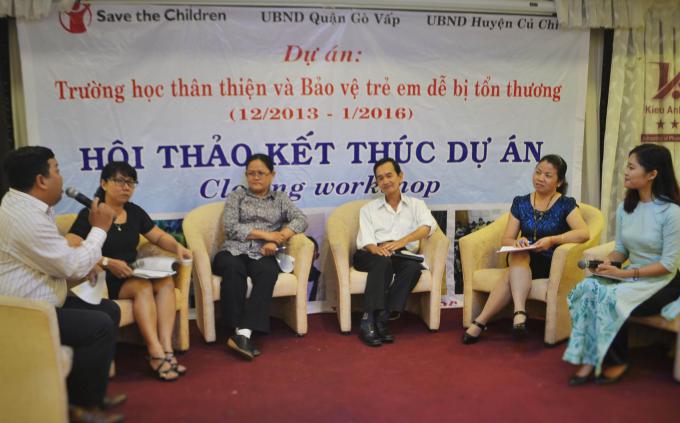Program Supports Thousands of Marginalized Vietnamese Children
Save the Children in Vietnam organized a workshop to review its project for migrant and other marginalized children in Ho Chi Minh City in late January to assess what has been done and the way forward.
The project, supported by IKEA Foundation, aims to improve the quality of child protection and education in Ho Chi Minh City, particularly that for marginalized children. Officially known as “Improved Protection and Quality Education for Migrant and other Marginalized and Vulnerable Children in Ho Chi Minh City,” the program was implemented in eight schools in the two districts of Go Vap and Cu Chi.
“We are at the final stage of finalizing the phase I of this project,” said Erwin Nacuray, Deputy Country Director of Save the Children in Vietnam, at the closing workshop. “The initial achievements from the project implementation have led Save the Children to sustainable approach where children will no longer have to live with the paradox of reconciling of rights and duties, nor through the ordeals of being abused, bullied and be able to access education regardless of where they are from, economic background, ethnicity, or gender.”
In its first phase from 2013 to early this year, the project supported approximately 2,000 marginalized and disadvantaged children including 500 minors living in Buddhist Association institutions and hundreds of educators and caregivers. Another 10,000 school children and their families got indirect benefits from the program.
Despite Vietnam’s rapid development and improvement in children care and protection in the past decades, children in the country still face significant child rights violations including exploitation, abuse, and neglect. This is particularly the case for marginalized groups such as migrant children, poor children, or children living in institutions.
Ho Chi Minh City is home to an estimated 300,000 migrant children, who, without proper registration, are vulnerable to discrimination, neglect and lack access to quality education and protection services. Besides, it has more than 70,000 children living in special circumstances such as children with disabilities, orphans, children affected by HIV/AIDS, street children, according to the city’s Department of Labour, Invalids and Social Affairs.
Among the program’s activities, Save the Children staff distributed Good Parenting IEC materials to raise awareness among the community. The project developed minimum care and protection standards for the Buddhist Association to ensure the basic rights of children living in the association’s institutions.
The program engaged teachers, parents and children themselves in the efforts to abandon corporal punishment by educating community boards and school managers about the negative impacts of corporal punishment, asking teachers and parents to sign the posters “Stop abuse and physical violence against children.” The posters were then shown in the classrooms as a reminder for the teachers and to inform the children of their rights.
The project also provided training for teachers about positive discipline techniques and introduce the child-centered method for assessing a class’s success. Teachers were instructed to assess the success of a colleague’s class by observing the children’s happiness and level of participation instead of giving peer review.

Article by Ha An and Quang Nguyen
 Vietnam
Vietnam